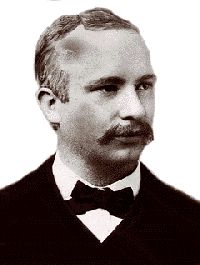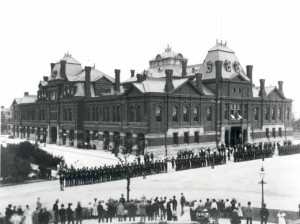- Home
- News
- Features
- Topics
- Labor
- Management
- Opinions/Blogs
- Tools & Resources
Workers Died Establishing Labor Day in the USA
What is now a day off in the United States was born directly out of the deaths of workers at the hands of their employers and the government.
Labor Day in the United States was first observed on 5 Sept. 1882, by the Central Labor Union of New York. Labor Day as a national holiday was first proposed by Peter J. McGuire of the American Federation of Labor in May 1882. McGuire (7/6/1852-2/18/1906) was a nineteenth century American labor leader, founder of the United Brotherhood of Carpenters and Joiners of America and a leading figure during the first 30 years of the American Federation of Labor.
Born in New York City, McGuire was a political activist before becoming a trade unionist. He became a member in 1873 of a body known as the Committee for Public Safety, which was campaigning for unemployment benefits.
McGuire was arrested while occupying the office of the City’s Police Commissioner who had refused to grant the Committee for Public Safety a parade permit. He soon joined with Adolph Strasser, later president of the Cigar Makers’ Union, to found the Social Democratic Workingmens Party of North America, a Lassallean socialist organization that wanted to achieve socialism through organization of a socialist party and organizing trade unions.
McGuire also founded and edited a newspaper, The Toiler, toured the United States lecturing for the party and working as a carpenter during the 1870s.
He became deeply involved in the campaign for the eight hour day and a member of the Greenback Labor Party after moving to St. Louis, Missouri in 1878, where he worked as a carpenter and joined the Knights of Labor. He led a successful carpenters strike in St. Louis for the eight hour day.
Following the deaths of a number of workers at the hands of the U.S. military and U.S. Marshals during the Pullman Strike, President Grover Cleveland reconciled with the labor movement by creating Labor Day as a national holiday.
The Pullman Strike was the first nationwide conflict between labor unions and railroads in the United States. The conflict began in the company-owned town of Pullman, Illinois, on May 11, 1894, when approximately 3,000 Pullman Palace Car Co. employees began a wildcat strike in response to recent wage reductions, bringing rail traffic west of Chicago to a halt.
During the economic panic of 1893, the Pullman Palace Car Co. slashed wages as demand for train cars dried up and the company’s revenue dropped. A delegation of workers complained of the low wages, 16 hour workdays and the company’s failure to decrease rents or the price of goods in the company-owned town. Company owner George Pullman “loftily declined to talk with them.”
A boycott began June 26, 1894. In four days, 125,000 workers on 29 railroads had quit work rather than handle Pullman cars. Adding fuel to the fire the railroad companies began hiring replacement workers (strikebreakers), which increased hostilities. Many African-Americans, fearful that the racism expressed by the American Railway Union would lock them out of railroad work, crossed the picket line, adding a racial dimension to the strike.
The strike was broken up by United States Marshals and 12,000 United States Army troops, commanded by Nelson Miles. The troops and marshals were sent in by President Grover Cleveland on the premise that the strike interfered with U.S. Mail delivery, violated the Sherman Antitrust Act and threatened public safety. The military action and subsequent worker deaths led to more violence. During the strike, 13 strikers were killed and 57 were wounded.
President Cleveland reconciled with the labor movement. Fearing more trouble, legislation making Labor Day a national holiday was rushed through Congress unanimously and signed into law just six days after the strike. The September date originally chosen for Labor Day by the CLU of New York and observed by many of the nation’s trade unions was selected rather than the more widespread International Workers’ Day, May 1, because Cleveland was concerned that observance of the latter would stir up negative emotions linked to the 1884 Haymarket Affair, which it commemorated.
The Haymarket Affair started as a May 1 rally in support of striking workers in Chicago and ended in with a bomb thrown at police and resulting gunfire. Eight police offers were killed, mostly from friendly fire, about 60 officers were wounded. Four workers were confirmed dead and an unknown number were injured. May 1 is now celebrated worldwide as International Workers’ Day.
An addendum:
Columns in favor of American workers and their rights in American newspapers are few and far between.
Here’s a nice one from Mike Cassidy of the San Jose Mercury News.
List your business in the premium web directory for free This website is listed under Human Resources Directory






